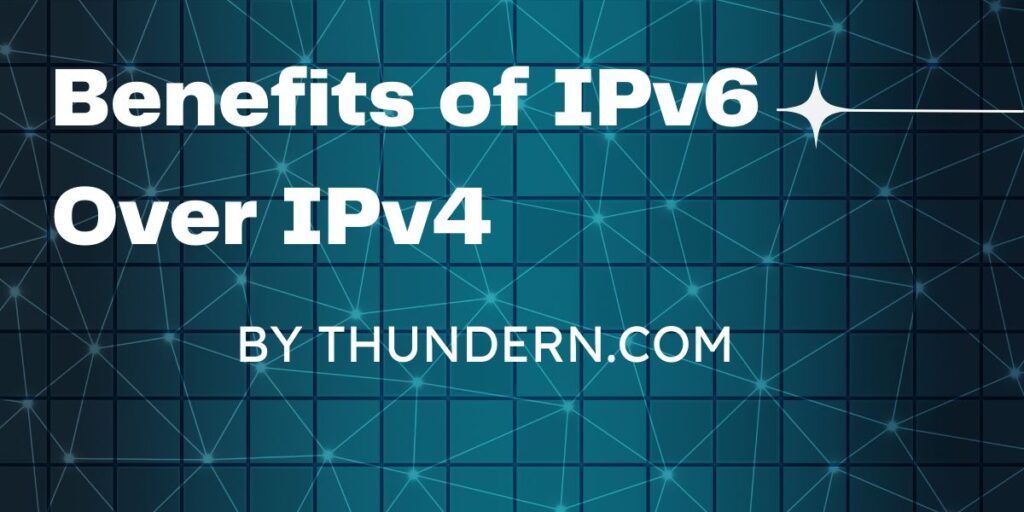Introduction
2607:fb91:15af:7350::62 is a great example of how the Internet is growing rapidly, with devices connecting from all corners of the globe. As the old IPv4 system runs out of available IP addresses, IPv6 steps in as a strong solution. It offers a much larger pool of addresses and important features that meet today’s networking needs. This specific IPv6 address showcases the advantages of the new protocol, including better routing and improved security, making it vital for our increasingly connected world.
What is IPv6?
IPv6 stands for Internet Protocol version 6 and is the latest iteration of the Internet Protocol, which facilitates device communication over the Internet. IPv6 was developed to address IPv4 limitations, offering a vastly larger address pool and supporting advanced features.
Larger Address Space
: IPv6 uses a 128-bit address structure compared to IPv4’s 32-bit, enabling around 340 undecillion unique addresses.
Improved Efficiency and Security
: IPv6 simplifies headers, allows for more secure data transmission, and has a built-in IPsec feature for encryption and authenticationRight Way Time.
Understanding the IPv6 Address: 2607:fb91:15af:7350::62
The IPv6 address 2607:fb91:15af:7350::62 represents a specific location in the IPv6 architecture. Here’s a breakdown of its components:
2607: Identifies the global routing prefix.
fb91:15af:7350: Specifies subnets within the global prefix, directing traffic to specific networks or devices.
::62: The double colon compresses consecutive zero blocks, and “62” denotes the device or interface identifierRight Way Time.
This breakdown highlights how IPv6 addresses are structured for more efficient routing and scalability, making them ideal for today’s Internet demands.
Benefits of IPv6 Over IPv4

1. Expanded Address Space
IPv6 addresses provide a vastly larger address space. While IPv4’s 32-bit space allows for around 4.3 billion addresses, IPv6’s 128-bit space offers over 340 undecillion addresses.
2. Enhanced Security Features
With built-in support for IPsec, IPv6 is designed for secure, authenticated communication by default, making data transfers safer.
3. Simplified Routing
IPv6’s simplified headers reduce router load, making data flow more efficient and supporting better network performance.
4. NAT Elimination
Unlike IPv4, IPv6 removes the need for Network Address Translation (NAT), allowing each device to have a unique public IP address.
Features of IPv6
Here are some defining features of IPv6 that make it a crucial step forward for Internet infrastructure:
| Feature | IPv6 | Benefit |
|---|---|---|
| Address Space | 128-bit (340 undecillion addresses) | Eliminates IP shortage issues |
| Auto-Configuration | Stateless Address Auto-Configuration (SLAAC) | Devices automatically configure themselves |
| IPsec Integration | Mandatory in IPv6 | Provides end-to-end encryption |
| Simplified Header | Optimized for efficient routing | Increases packet processing speed |
| NAT Removal | No NAT needed | Reduces network complexity |
| Enhanced Mobile Support | Supports mobile devices with improved handoffs and connectivity | Better for mobile and IoT applications |
Breaking Down 2607:fb91:15af:7350::62
The address structure of 2607:fb91:15af:7350::62 follows IPv6 conventions, providing hierarchical organization and facilitating efficient data routing. The “::” compression represents groups of zero bits, and each section of the address helps routers direct data with precision:
- Global Routing Prefix (2607): Specifies the originating ISP or organization.
- Subnet Identifiers (fb91:15af:7350): Directs data to specific regions or groups.
- Device Identifier (62): Identifies the end device within the subnetRight Way Time.
Applications and Use Cases of IPv6
IPv6 supports modern-day technologies and emerging applications across multiple sectors:
Internet of Things (IoT):
IPv6 enables unique addresses for billions of IoT devices, supporting their connectivity and security.
Cloud Computing and Data Centers:
Scalable addresses make IPv6 a fit for data-heavy applications like cloud storage and services.
Mobile Networks:
IPv6 aids mobile carriers in managing data flows across devices, supporting mobile app performance and efficiency.
Transitioning from IPv4 to IPv6
The shift to IPv6 is gradual, as many networks operate in a dual-stack environment, supporting both IPv4 and IPv6. This transition allows for a smooth migration without disrupting Internet services for IPv4-only devices. As IPv4 addresses deplete, IPv6 adoption is expected to accelerate
IPv6 Security: How 2607:fb91:15af:7350::62 Benefits
IPv6 improves security by integrating IPsec, which encrypts and authenticates all data packets. Additionally, features like Secure Neighbor Discovery (SEND) guard against attacks like IP spoofing and denial-of-service (DoS) attacks. IPv6 security measures ensure that devices using addresses like 2607:fb91:15af:7350::62 are protected against potential threats.
IPv6 Connectivity: Faster and More Reliable Internet
IPv6 improves Quality of Service (QoS) with faster data routing, simplified headers, and more efficient packet handling. This enhanced connectivity makes IPv6 especially suitable for real-time applications like streaming, gaming, and video conferencing.
Conclusion:
IPv6, represented by addresses like 2607:fb91:15af:7350::62, is essential for the Internet’s future. It enhances scalability, security, and efficiency—qualities vital for IoT, cloud computing, and other digital advancements. Understanding IPv6’s role and addressing structure helps us prepare for a more connected, secure Internet future.
FOR MORE VISIT: THUNDERN.COM
FAQs on IPv6 and the Address 2607:fb91:15af:7350::62
What is an IPv6 address, and how does it differ from IPv4?
An IPv6 address is a 128-bit alphanumeric address used to identify a device on a network, whereas IPv4 uses a 32-bit structure. IPv6 provides a much larger pool of unique addresses.
What does “2607:fb91:15af:7350::62” represent?
This is a specific IPv6 address broken into a global routing prefix, subnet identifiers, and a device identifier, each facilitating data routing.
Why is IPv6 important for the Internet of Things?
IPv6’s expanded address space allows every IoT device to have a unique IP, ensuring secure and reliable connectivity.
Can IPv6 improve network performance?
Yes, IPv6 reduces header size and complexity, leading to faster routing and better performance for high-traffic networks.
Is IPv6 more secure than IPv4?
Yes, IPv6 has built-in security with IPsec, making it more secure and less vulnerable to certain types of cyber threats.



